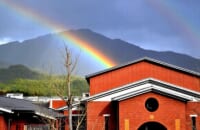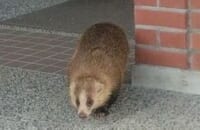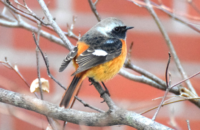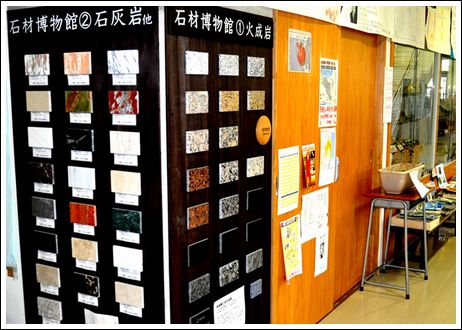
本校理科MSの一角に『石材博物館』があります。
ある石材業者からご寄贈を受け、「火成岩」「堆積岩一般」「石灰岩(大理石)」にボ-ドを分けて展示しています。3年生理科Ⅱでは『校内岩石ウォ-クラリ-』というフィ-ルドワ-ク授業での観察ポイントになっていて、この場所で地球を構成する岩石の多様性を学びます。
ところで、本校でも多くの人が通学で利用するJR京都駅には隠れた名所『石の博物館』があるのです。
中央改札口を北側に出た広場の左右には、写真のように柱の壁面に研磨された小さな岩石標本が埋め込まれています。そのひとつ、ドイツの石灰岩石材「ジュライエロ-」という石の下部には何とアンモナイトの化石が。石灰岩は当時の貝類やサンゴ、フズリナ(紡錘虫)や有孔虫など炭酸カルシウムの殻や骨格をもつ生物が多く含まれていますので、観察すればまだまだ多くの古代生物に出会うことができます。
みなさんも是非、通学中の寄り道で、地球のロマンに触れていただけたら嬉しい限りです。
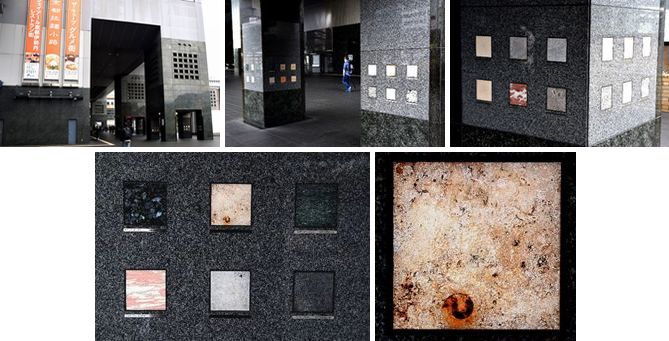
Our Rock Museum and Kyoto Station’s Ammonite
In the Science Department Media Space of our school there is a Rock Museum. The rocks on display were donated by a stonemason, and are divided into “Igneous Rocks”, “Sedimentary Rocks”, and “Limestone and Marble”. In their science classes, our 3rd year students observe the display as part of a “Walk Rally” of rocks and stones within the school, and they can learn about the formations of different rock and stones around the world.
By the way, at JR Kyoto Station, which is used by a lot of our students, there is also a “Rock Museum”. To the left and right in the space just north of the Central Exit you can see examples of rocks in the pillars, as shown in the photos. One of these is a German rock called “Jura Yellow”, and it has an Ammonite fossil in it. A lot of limestone contains such things as shells, coral, fusulinida or foraminifera fossils, as well as the calcium carbonate of different animal’s bones, so you can find ancient organisms if you look closely.
I hope that you can discover this wonderful part of our earth on your way to school.
